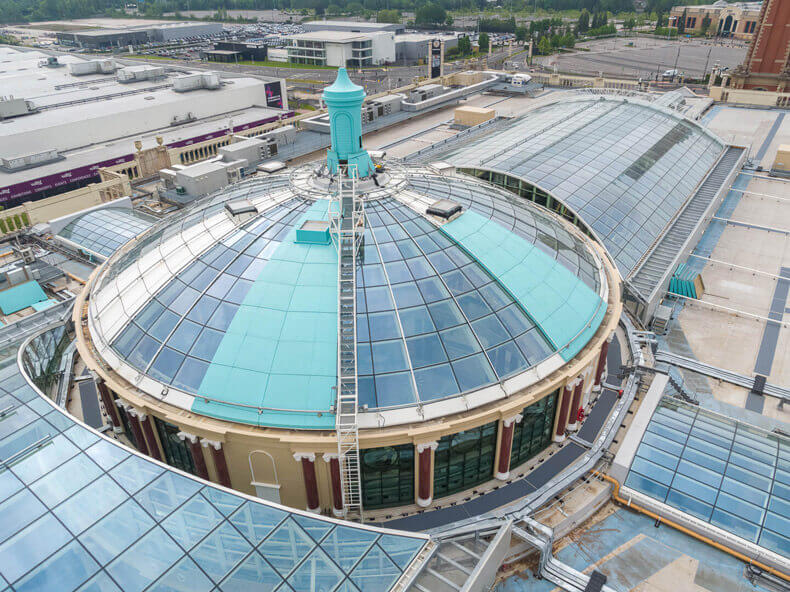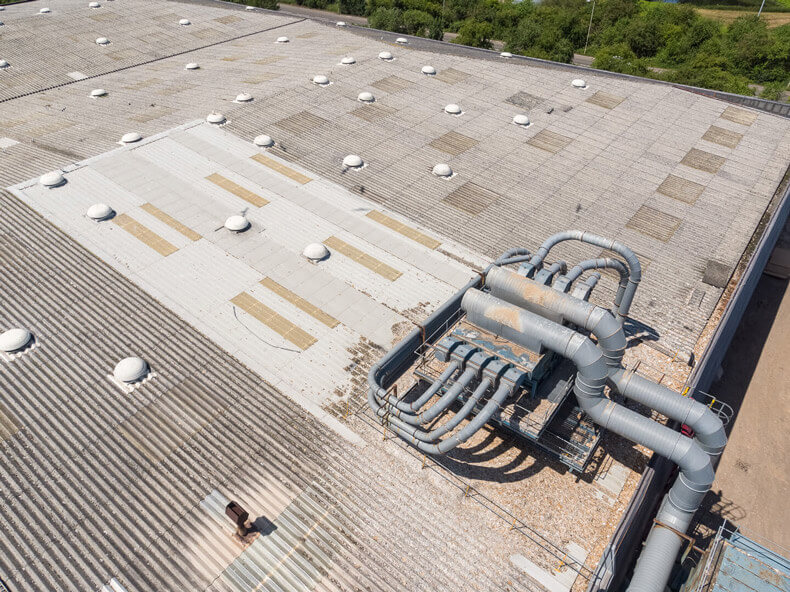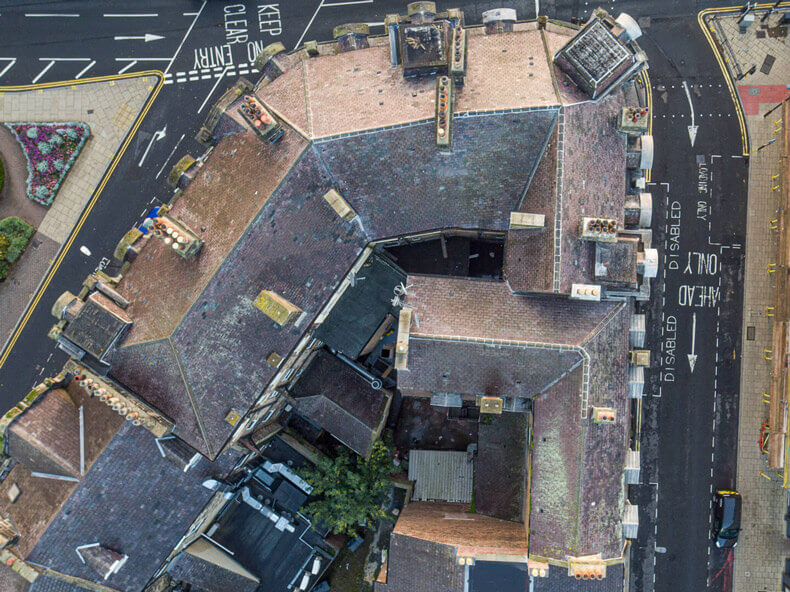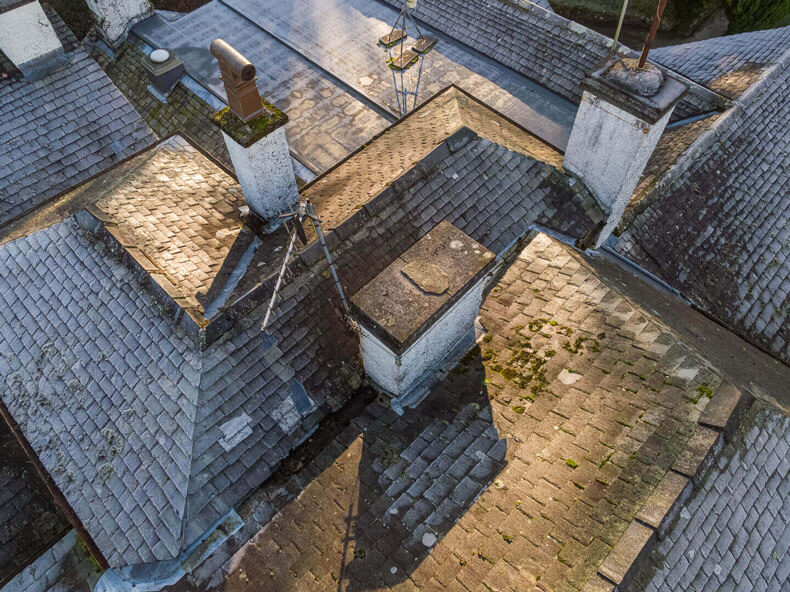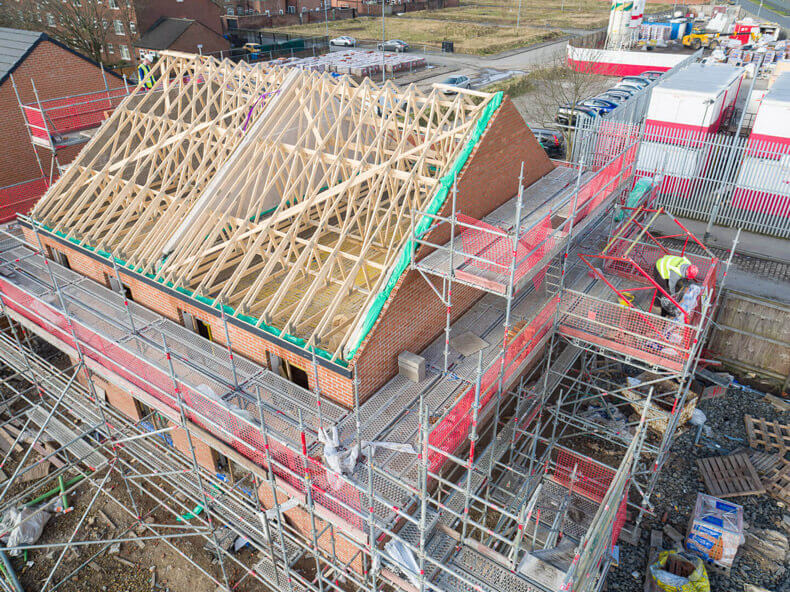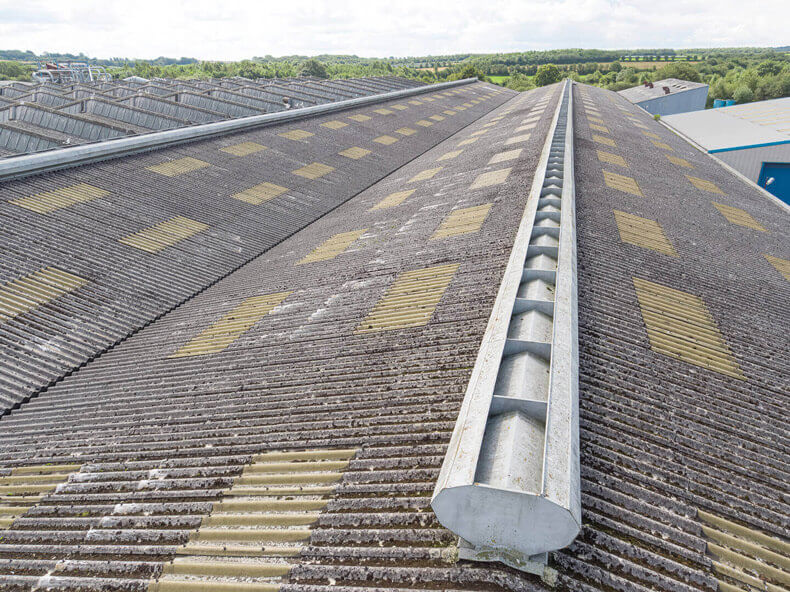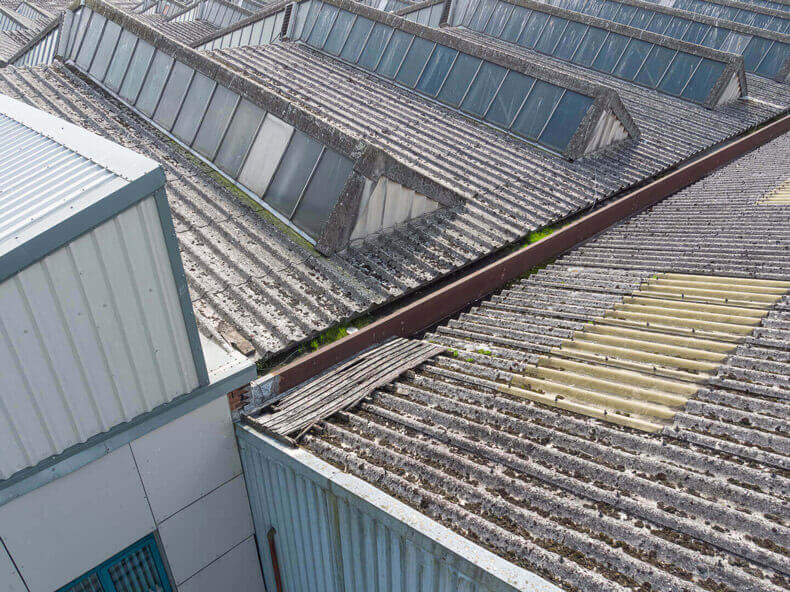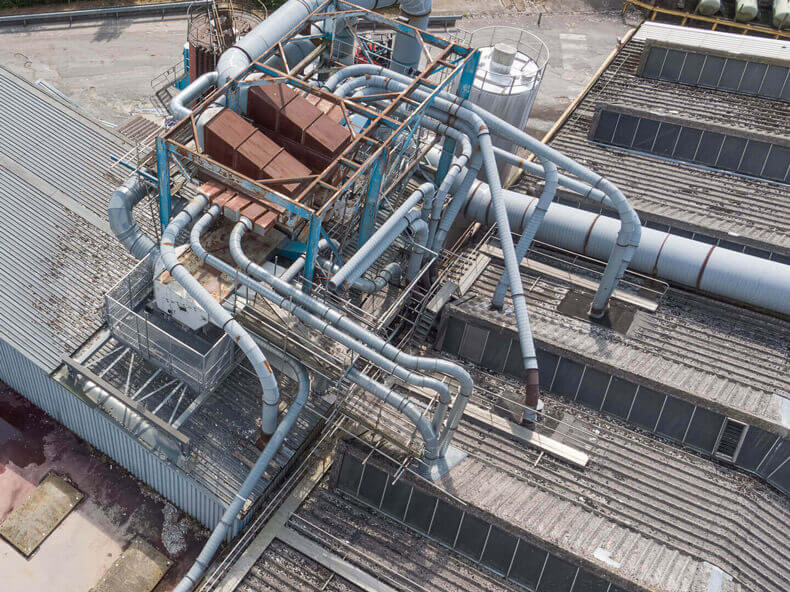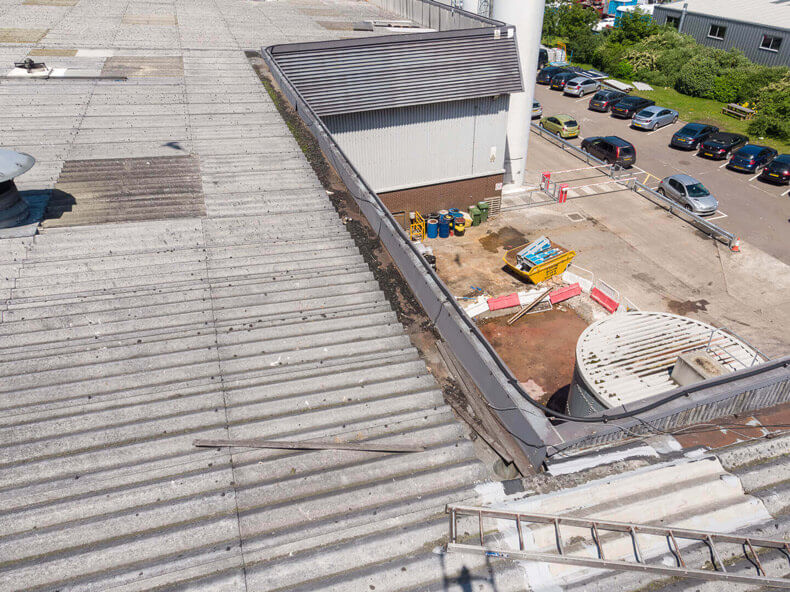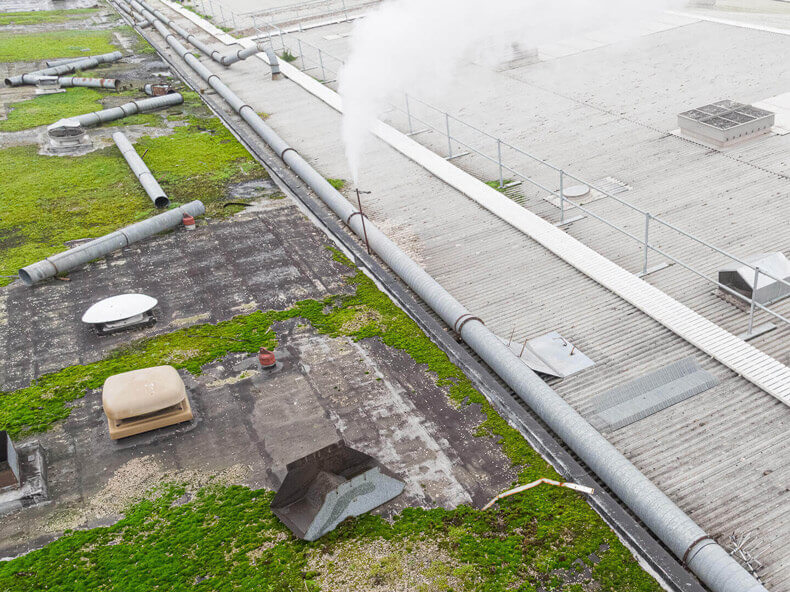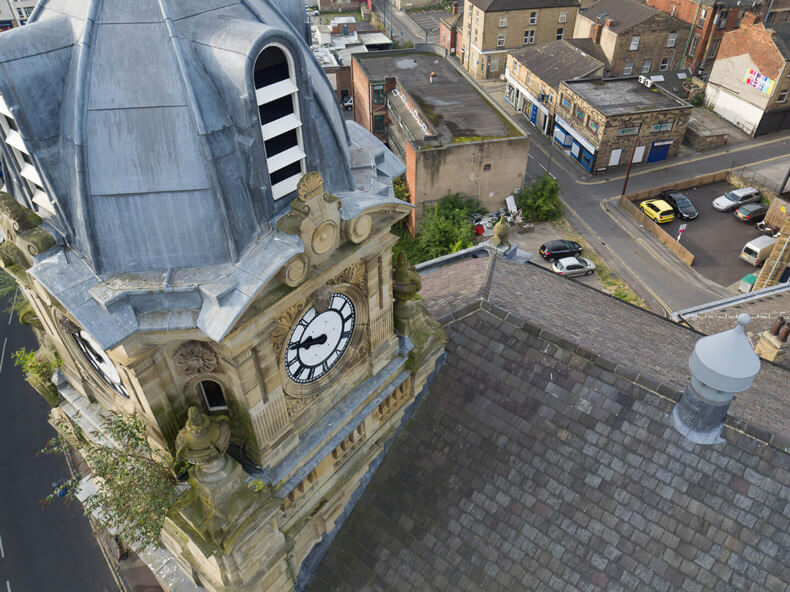When Might Commercial Property Need a Drone Roof Survey
Drones are extremely useful tools in the built environment, as they gather data from hard-to-reach and hazardous areas. Heights in particular are always a safety concern, so you should opt for a drone roof survey when you need to inspect the condition of your roof, windows, facade or any other high level or dangerous to access asset. This is because the work can be carried out safely from ground level.
Using a drone for surveying and inspection work is still a relatively new concept, so you may have doubts as to their efficiency. However, with over 15 years worth of practical experience as a building surveyor and project manager, Mike from Midi Aerial Photography can attest to how thorough and advantageous a drone roof survey can be.
To give you a complete understanding of a drone’s surveying capabilities, we’ve put together this guide explaining why you might need a survey, what parts of a roof can be checked and what the key benefits are to using a drone.
When Might You Need a Drone Roof Survey?
A drone roof survey can be used to carry out many different types of inspections. Here are the more common reasons why someone might need an aerial survey to be conducted:
You Are Buying, Selling or Leasing a Commercial Property
Whenever it comes to property transactions, you want to be the one leading the sale or lease so you can get the best price. Large commercial and industrial properties require constant maintenance, and if you are the seller, you want to prove you have kept on top of repairs. If you are the buyer, you want to mention key concerns that may bring the cost down during negotiations. If you are leasing, you want to minimise your maintenance costs or dilapidations claims. If you are a landlord, you need to make sure your tenant is fulfilling their maintenance duties.
Planned Preventative Maintenance
Regardless of whether or not you are selling or leasing a commercial property, any surveyor will advise you to conduct Planned Preventative Maintenance (PPM) regularly. Damage can seriously affect operations going on inside the building, as a leaking roof could cause slippages, ruin merchandise or provide an entrance for vermin. In a worst case scenario, water ingress could cause a fire hazard if electrical equipment or wiring is near the defect.
By inspecting your roof or building on a regular basis, you mitigate the risk of serious damage. And if you spot a minor problem quickly, acting fast can stop it from becoming a major issue.
Adverse Weather Conditions
The British weather is known for being temperamental and unsettled. We can literally have all the seasons in one day. Your property could be damaged by poor weather conditions, so it is a good idea to conduct a drone roof survey after particularly heavy rainfall or strong winds.
This allows you to check the overall condition of your property, carry out defect analysis and hopefully rectify any damage before it gets worse. As with PPM, staying on top of any potential problems means you have more options to take action on.
Insurance Claims
If your commercial property’s roof is badly damaged by the weather, theft or vandalism, you may need to claim for the repairs using your business insurance. Your provider will want to know the:
-
Condition of the roof before the damage took place
-
Cause of damage
-
Extent of the damage
Regular drone roof surveying puts you on better footing, as you can provide your insurance company with condition reports and give detailed analysis of the damage caused.
What is Included in a Drone Roof Survey?
Drone surveys are extensive photographic or video inspections and can cover difficult, dangerous or expensive-to-access areas safely, in comparison to other conventional access methods. If you instruct a drone operator to conduct a survey, they can also look at:
-
Chimneys/Chimney Stacks: Chimney defects can cause problems with a building’s structural integrity. It is important to make sure they have not subsided over time or due to major natural occurrences (ie. harsh weather or earthquakes).
-
Gutters: Gutters are vital for keeping your building in top condition. Check them regularly for blockages, weak joints and corrosion, as leaking gutters can cause serious damp penetration.
-
Solar Panels: Solar panels are great long-term investments for companies, but they require frequent checks to make sure they are working at maximum efficiency. A buildup of dirt can stop solar panels from being as effective, and you will need to keep an eye on the inverters. If they are not flashing green, you are losing money by not compensating for the electricity you are using.
-
Skylights and Windows: Skylights and roof windows are particularly hard to reach, but need to be inspected regularly. Looking at a skylight from the inside cannot present you with the full story. Hairline cracks can appear in the glass and frames and flashing can fail, resulting in water ingress or thermal deficiencies.
What are the Benefits of a Drone Roof Survey?
Using drones for aerial survey and inspection work is still an idea that is growing in the built environment sector, so not everyone is aware of all the benefits. They are:
Safety
Accessing a roof can be dangerous work. A drone operated by a competent operator with a Permission for Commercial Operations (PfCO) from the Civil Aviation Authority (CAA) will be able to inspect the roof safely at ground level and from distance.
An operator with Extended Permissions via an Operating Safety Case (OSC), such as Mike, has greater privileges allowing for roofs to be inspected in built-up areas like city centres.
Midi Aerial Photography has been granted a CAA OSC, which means we can operate drones at a minimum of 10m from other buildings, people, vessels and vehicles at take-off, and a minimum of 30m during flight, which is perfect for flying in congested environments.
Speed
If you have multiple points that need inspecting, such as the roof, gutters and windows, it could take one person several hours or days to complete. This is especially true if your commercial property is expansive and does not have easy access points.
A drone, on the other hand, can capture high quality images with much greater speed and efficiency.
Cost-Effectiveness
Hiring someone to physically access and inspect your roof or building can be expensive. As it could take much longer for an individual to carry out an inspection, the end costs could be significant.
The person conducting the survey may also need access to safety equipment, such as scaffolding, platforms or a cherry picker. These are expensive to rent, which will add to your overall costs and the time it takes for completion.
In comparison, a drone roof survey is usually a much less costly alternative as it is quicker, more efficient and less labour and material intensive.
Interested in a Drone Roof Survey?
Instructing a competent drone operator to complete a roof survey is one of the smarter maintenance decisions a building owner or tenant can make. Not only is a drone safer than sending a person to the roof, it is much cheaper, quicker and covers other aspects, such as the windows and gutters.
If your commercial property is in need of an inspection, get in contact for more information on how a drone roof survey can be of benefit.


